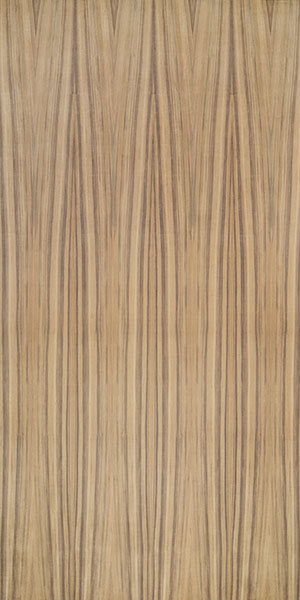Veneers
Delivering the best-in-class veneer sheets.

Veneers
Delivering the best-in-class veneer sheets.
What is
Veneer?
Veneer is a very thin sheet (a few mm) of wood obtained by slicing off a hardwood log with the help of different processes. We obtain ours with the help of an Angelo Cremona Slanting Veneer Slicer in thicknesses ranging between 0.15 mm to 1 mm. Veneer slicing follows one of the following methods:
Quarter Cut
Slicing the marked log at right angles to its growth rings, to obtain a straight pattern
Crown Cut
Slicing the marked log parallel to the growth rings to obtain a crown like figure, usually with a straight pattern on either side
What is Veneer?
Veneer is a very thin sheet (a few mm) of wood obtained by slicing off a hardwood log with the help of different processes. We obtain ours with the help of an Angelo Cremona Slanting Veneer Slicer in thicknesses ranging between 0.15 mm to 1 mm. Veneer slicing follows one of the following methods:
Quarter Cut
Slicing the marked log at right angles to its growth rings, to obtain a straight pattern
Crown Cut
Slicing the marked log parallel to the growth rings to obtain a crown like figure, usually with a straight pattern on either side
Starwood
Veneer
Grading
We usually grade our Burmese Teak veneers as A, AB, B or C/Utility, arranged in the increasing order of defects. It is important to note that veneer defects are not defects in the conventional sense. They are just irregularities in grain pattern that occur naturally in wood.
A typical veneer with dimensions; thickness – 0.15 mm to 1 mm, length – 1.22 mtr to 3.25 mtr and width – 7 cm to 30 cm, can exhibit one of the four following grades.
A
Quarter / Crown Cut and no defect
AB
Quarter / Crown Cut and one or two defects like knots, flashes, firemarks etc.
B
Quarter / Crown Cut and three or four defects like knots, flashes, firemarks etc.
C / Utility
Quarter / Crown Cut with numerous defects
Starwood Veneer Grading
We usually grade our Burmese Teak veneers as A, AB, B or C/Utility, arranged in the increasing order of defects. It is important to note that veneer defects are not defects in the conventional sense. They are just irregularities in grain pattern that occur naturally in wood.
A typical veneer with dimensions; thickness – 0.15 mm to 1 mm, length – 1.22 mtr to 3.25 mtr and width – 7 cm to 30 cm, can exhibit one of the four following grades.
A
Quarter / Crown Cut and no defect
AB
Quarter / Crown Cut and one or two defects like knots, flashes, firemarks etc.
B
Quarter / Crown Cut and three or four defects like knots, flashes, firemarks etc.
C / Utility
Quarter / Crown Cut with numerous defects
Matching
Matching or jointing, is the process of matching veneer leaves in a creative manner to obtain a desirable look and feel of the resulting veneer sheet. At Starwood, we match adjacent veneer leaves in either book, slip, reverse slip or mix (random) fashion.
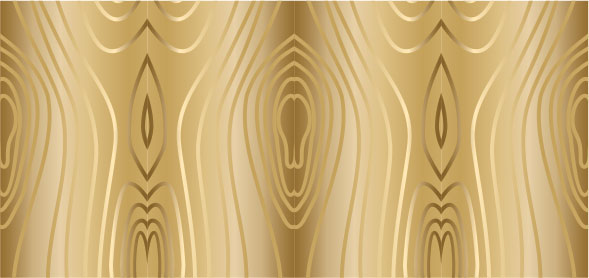
Book match
Book match is the standard method where various veneer leaves or strips are joined together in mirror image pairs. Every other veneer leaf is turned over and the adjacent leaves then ‘open like the pages of a book’.
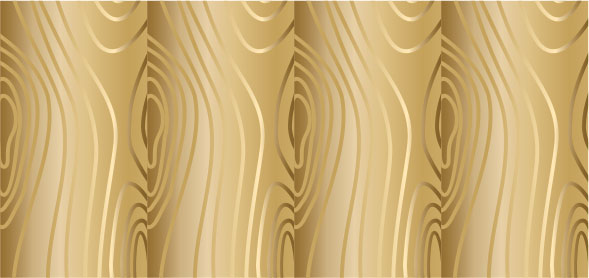
Slip match
In slip match, adjoining leaves are placed (slipped out) sequentially without turning. This results in all the same face sides being exposed. If the grain is straight, the joint may not even be visible.

Reverse slip match
This is the same as slip match except that the same face of the veneer leaves does not have to be on the same side.

Mix (random) match
In mix or random match, we join veneer leaves in a random fashion.
Our Manufacturing Process
We source authentic Burmese Teak from the authorized forests of Myanmar and process it at our plants to obtain high quality lumber and veneers. Read more about our detailed manufacturing process below:
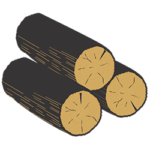
SOURCING, BUYING AND PROCURING THE RAW MATERIAL
We import our primary raw material, i.e. Burmese Teak in the form of skinned logs from Myanmar. Our sourcing procedure respects and follows the guidelines laid down by relevant government bodies like Myanma Timber Enterprises (MTE), Myanmar. Prior to segregating, the logs are labelled for source specific information and inventory verification; only a small portion of logs from some specific areas can be used to produce veneers.
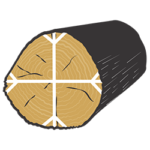
Segregation
The log batches first undergo inventory verification. They are individually examined for further processing into veneers or lumber and then numbered accordingly, for easy identification. To maximise the output, our experts examine them closely and mark them in a manner so that each log gets sawn the best way.
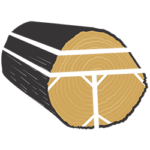
SAWING
The segregated logs for veneer are fetched to our partner unit in Myanmar. This unit houses a sawmill. Depending on the kind of output, the logs are either crown cut or quarter cut for obtaining veneers. It is worth noticing that the kind of cut we perform, determines the appearance of its sheet

BOILING
A shipment and logistics partner then fetches the sawn logs or teak beams to our Sampla plant. Crown cut and/or quarter cut teak is first stacked in different batches and then fed into a VAT boiler for 3 to 4 days. The temperature is maintained between 80 °C and 90 °C to soften the beams, making it easier to slice them.
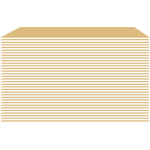
SLICING
The beams are fetched from the boiler and fed into an Angelo Cremona Slanting Veneer Slicer. Its Slanting Veneer Slicer gives quick turnaround time and generates minimum waste. Our expert operators adjust the beam with great precision, and carefully monitor it while sliced veneer leaves of 0.15 mm to 1 mm thickness keep emerging on the other end. Cremona Slicers cause 60% less slab loss (wood waste) in comparison to most of the slicing machines used around the world. In the same step, as a quality check reinforcement, the thickness of each edge cut veneer leaf is verified with the help of a Vernier Calliper.

DRYING
The veneer leaves are then dried to remove any traces of moisture content that might be present to protect them from warping, cracking and decays. Since they tend to be very thin, they can also bend and fold easily. The dryer eliminates this possibility by ironing them at the same time. It is important to note that grading, which is the last step, begins in a partial form from this stage only. That’s because once the veneer leaf is dry, the way it looks and the defects (natural irregularities in wood grain) it has, are locked in appearance.
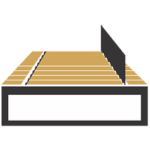
EDGE CUTTING
Dried veneer leaves from the same piece of sawn teak are segregated width wise and cut edge-to-edge with the help of a Casati Guillotine Machine. This removes any cracked or uneven edges.

CLASSIFYING AND JOINTING
The veneer leaf stacks are then classified according to their width and the sawn teak from which they have been obtained. They are marked in a manner which makes it easy to identify them at later stages. The marked stacks are then held tightly and affixed with an adhesive in a lateral manner along their lengths. They are then jointed or matched in one of these four types of matches – book, slip, reverse slip, or mix match.

SPLICING AND GRADING
After jointing, the final veneer sheet is examined closely for any non-uniformities along the matched edges. They are tightly affixed together to reinforce the veneer sheets’ strength and durability. Finally, they are adjudged A, AB, B or C / Utility grade depending on several physical attributes like number of natural defects and strip pattern. The graded sheets are then labelled, packed and dispatched to our storage yards before further transfers/exports.
Starwood A Grade Veneer
Species : Burmese Teak
Defects : None
Stripes : Straight
Thickness (Range) : 0.15mm – 1mm
Length (Range) : 1.22m – 3.25m
Width (Range) : 7cm – 30cm
Starwood Recommended Use Cases:
Wall Panelling, Acoustic Panelling, Doors, Cabinets, Furniture, Ceilings, Cabinets
Starwood AB Grade Veneer
Species : Burmese Teak
Defects : 1-2; Knot, Flash, Firemarks
Stripes : Straight
Thickness (Range) : 0.15mm – 1mm
Length (Range) : 1.22 m – 3.25m
Width (Range) : 7cm – 30cm
Starwood Recommended Use Cases:
Wall Panelling, Furniture, Door & Window Frames, Cabinets, Ceilings
Starwood B Grade Veneer
Species : Burmese Teak
Defects : 2-3; Knot, Flash, Firemarks
Stripes : Straight
Thickness (Range) : 0.15mm – 1mm
Length (Range) : 1.22 m – 3.25m
Width (Range) : 7cm – 30cm
Starwood Recommended Use Cases:
Decorative Panelling, Cabinets, Door & Window frames
An STG Group Company
HEAD OFFICE ADDRESS
A-1, First Floor, W.H.S., Timber Block, Kirti Nagar, New Delhi - 110015 (India)
P : 011 25436437 / 45102865
M : +91 9311958555
E : info@starwoodteak.com
Certifications


